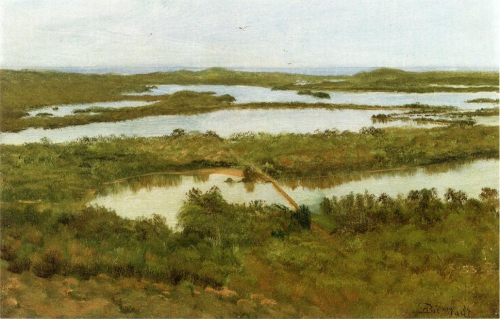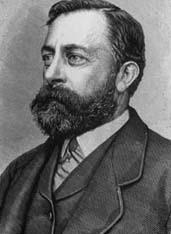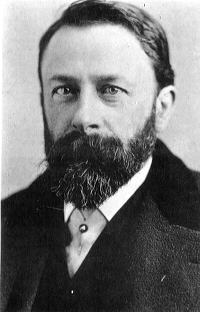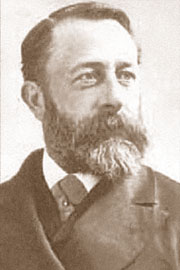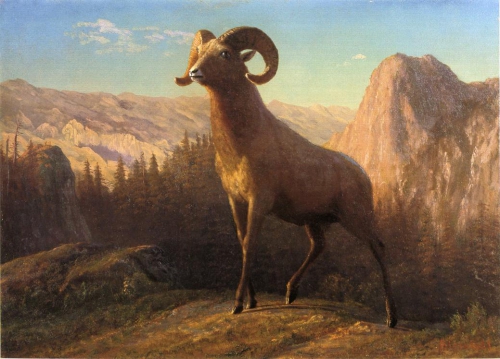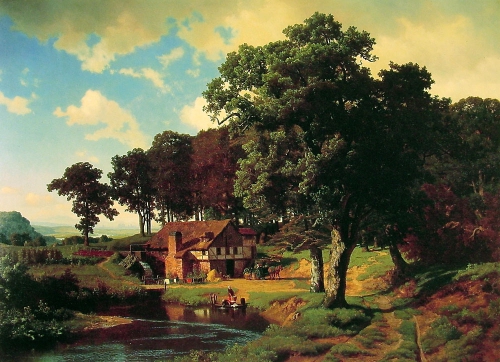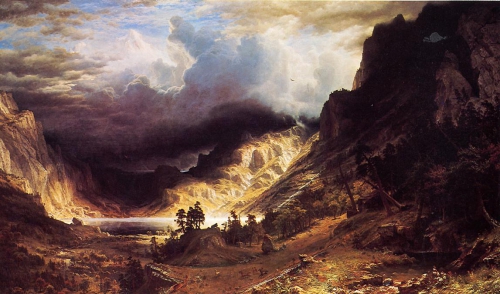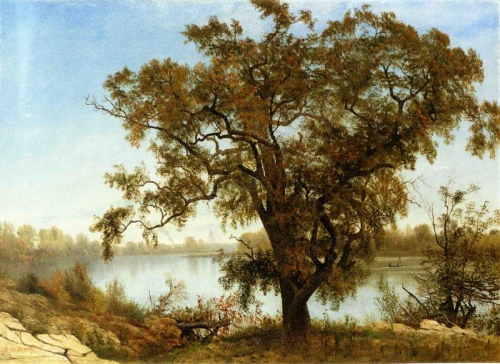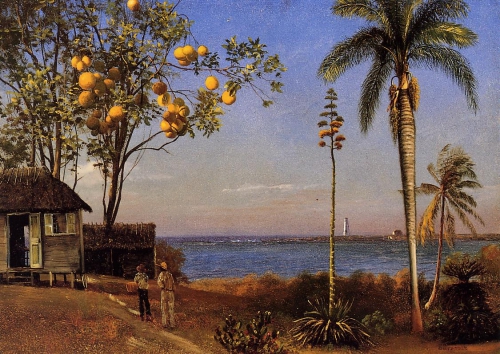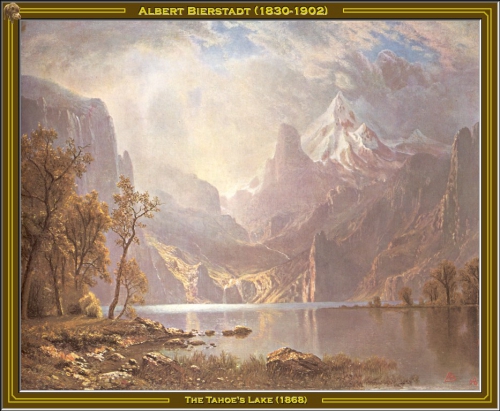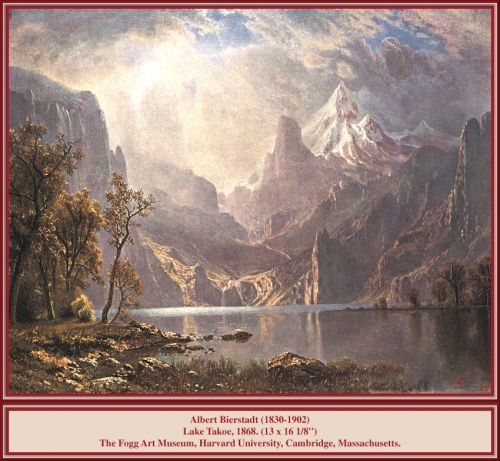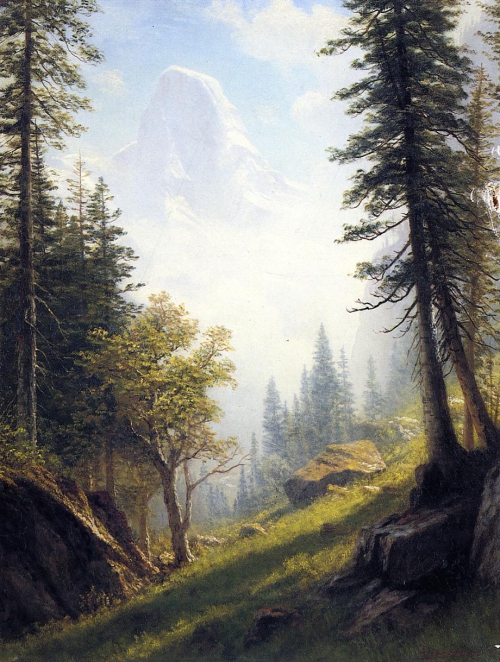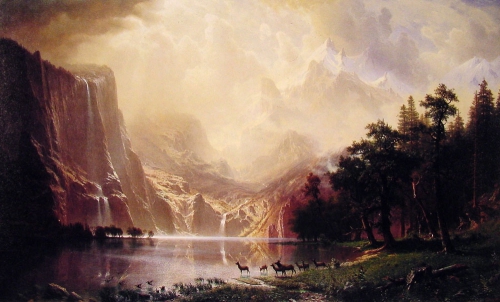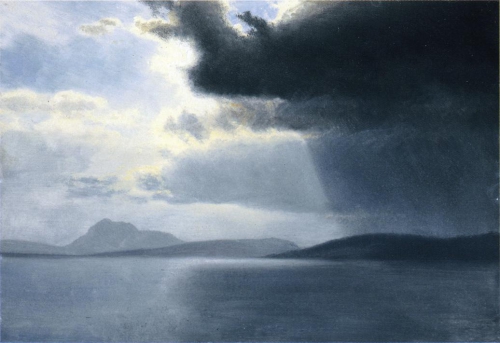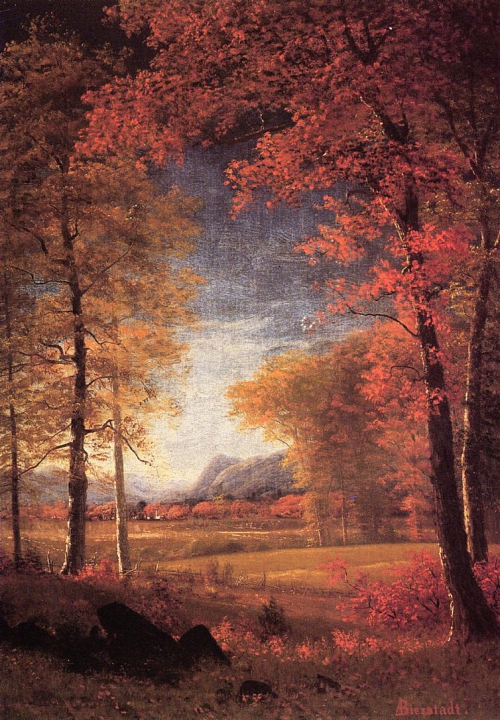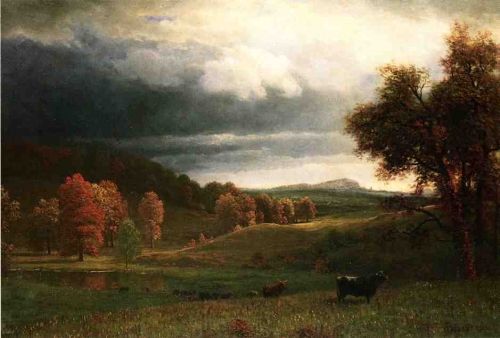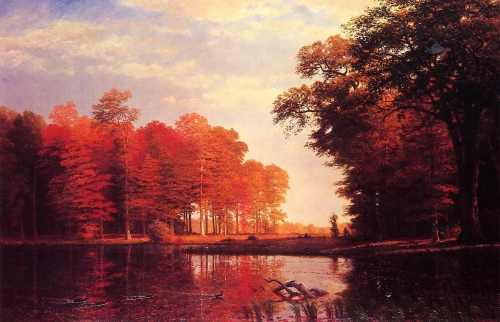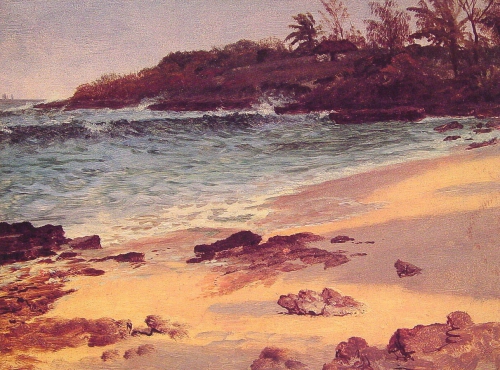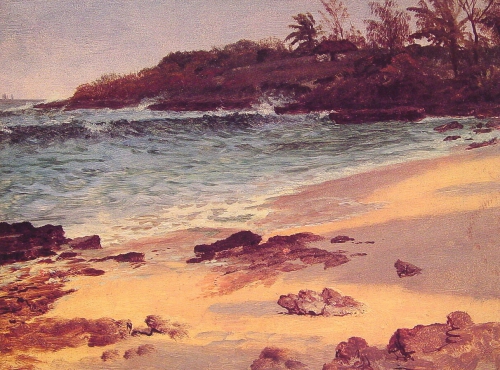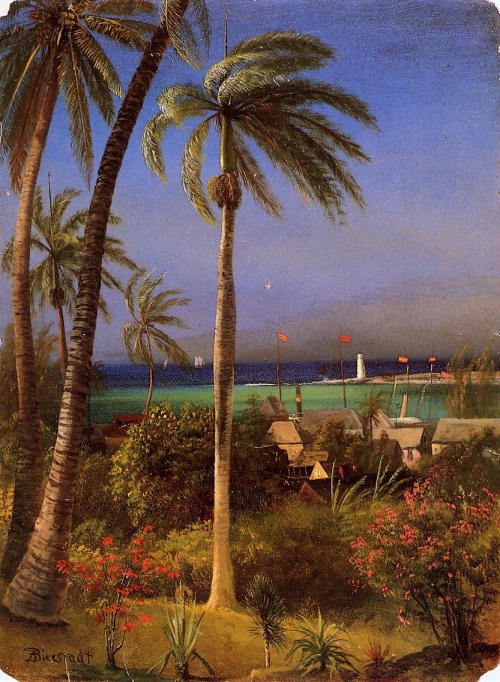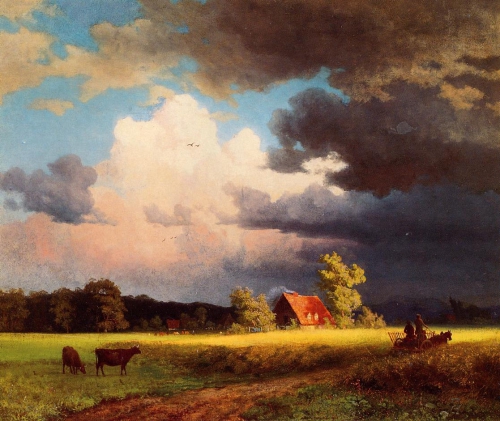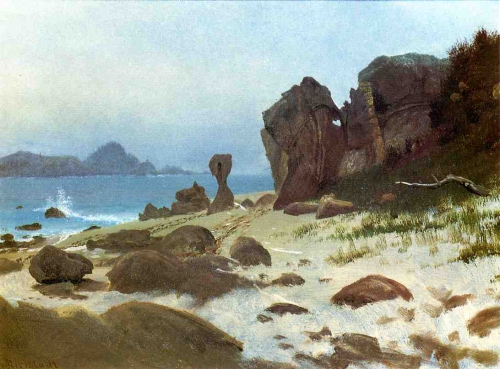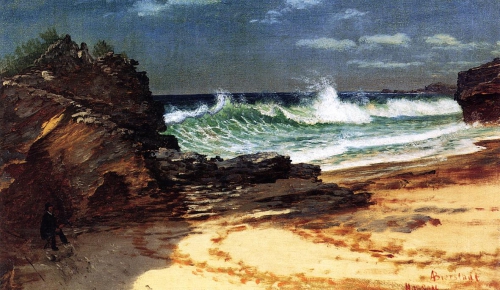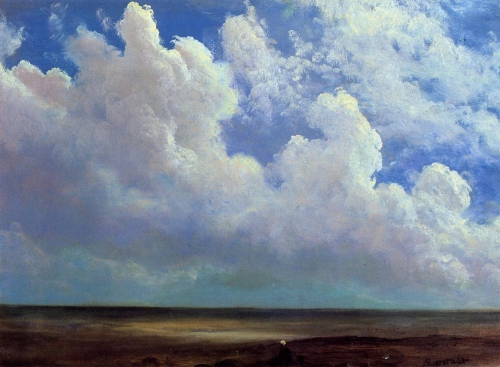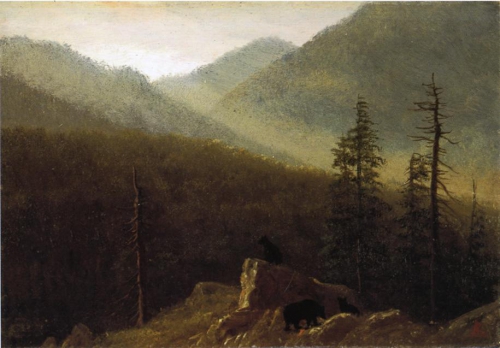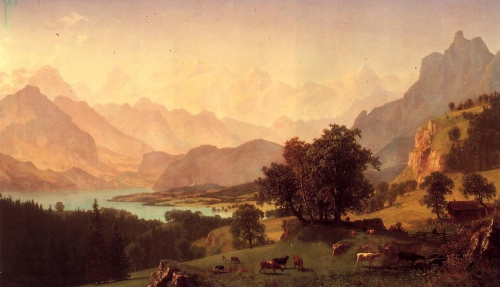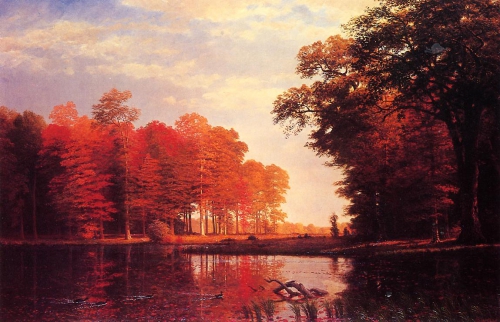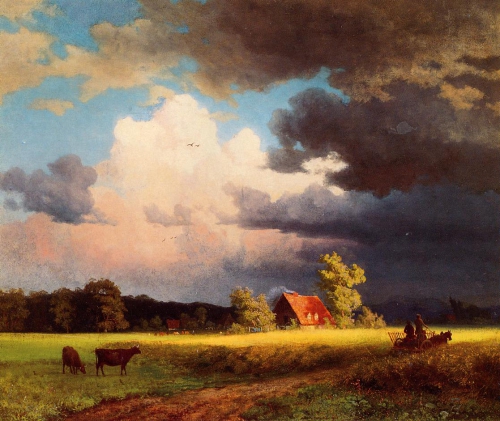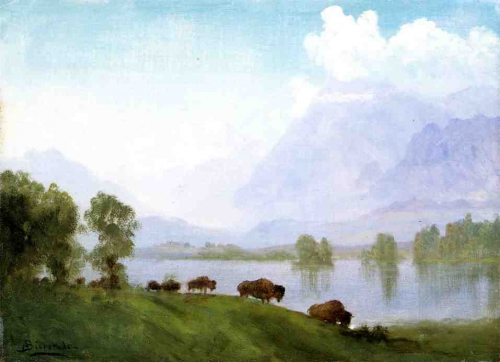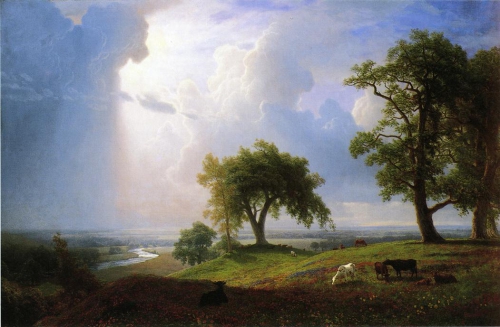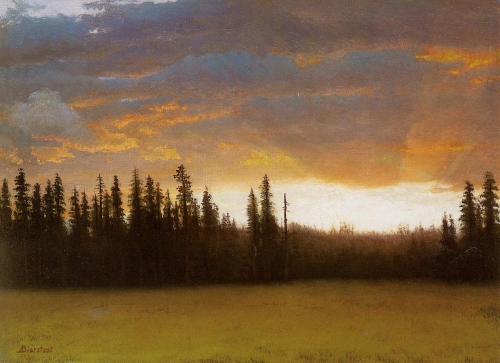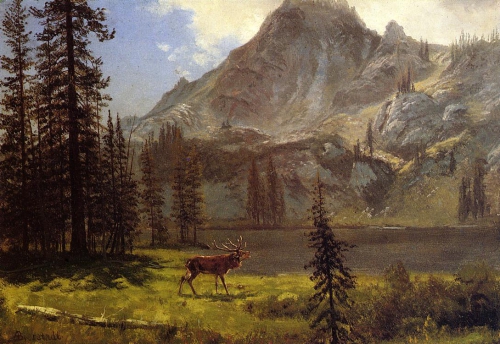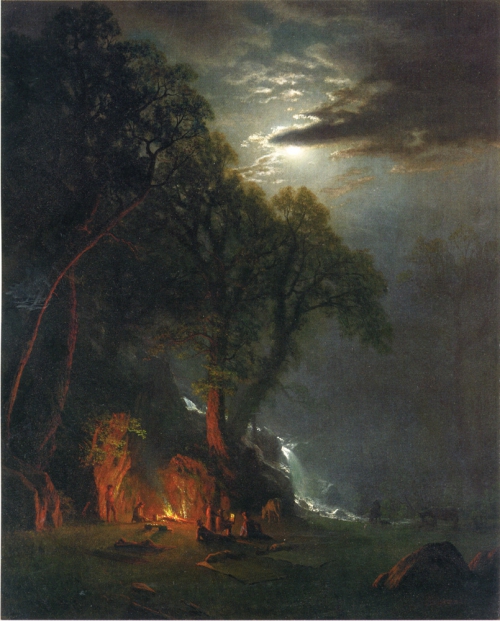Albert Bierstadt | XIXe | Albert Bierstadt (317 works)
Albert Bierstadt (January 7, 1830, Solingen - February 18, 1902, New York) was one of the most famous American landscape painters of the 19th century. A representative of neo-romanticism, he depicted the Wild West and Indians in his paintings. Belonged to the Hudson River School.
A year after his birth, the family moved to America. Later he traveled around Europe, especially Italy. Made many drawings of the Alps.
In 1859, while participating in geodetic measurements as part of an expedition of the US Army Corps of Engineers, he visited the Rocky Mountains for the first time. During the expedition he made many drawings and daguerreotypes, which he later used as templates for creating his landscapes. In landscapes, Bierstadt skillfully used the effect of the play of light and shadow.
His huge number of canvases with the Rocky Mountains (western USA and Canada), as well as Yosemite, emphasized the grandeur and drama of his works.
The artist's paintings were highly valued throughout the biography of Albert Bierstadt. So examples of the most famous works are: “The Rocky Mountains” (Metropolitan Museum), “Indian Encampment, Shoshone Village” (New York Public Library), “The Last of the Buffalo” (Corcoran Art Gallery), “Discovery of the Hudson River”, “The Settlement of California” (Capitol, Washington). Gained great popularity, one of his paintings was sold for $25,000.
Later, however, he lost his reputation by producing low-quality copies of his famous works.
